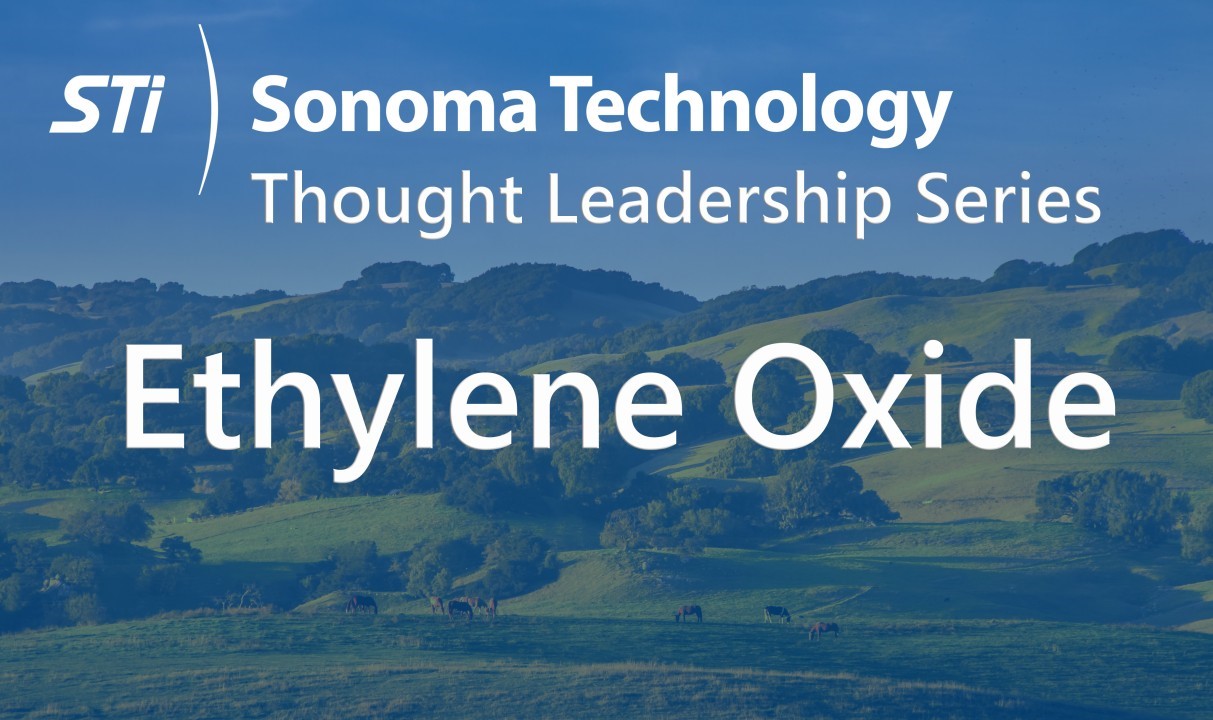Published March 2024
The state of the science for measuring concentrations of ethylene oxide (EtO) has changed since we published our initial blog on EtO measurement technology in July 2021, and measurement technology is now a central focus for industrial companies and regulatory agencies. EPA Compendium Method TO-15A Gas Chromatography-Mass Spectrometry (GC-MS) Canister Analysis has historically been the primary method for measuring EtO concentrations, but new methods are emerging in response to the need for faster, more sensitive results. Also, EPA now proposes to substantially revise the classic TO-15A method. Establishing or updating an EtO measurement program requires careful consideration of several factors.
What Are You Going to do with the Data?
Before determining how EtO data will be collected, one should establish the intended purpose of the measurement and how the data will be used. Clear understanding of the end purpose enables definition of key system specifications, including minimum detection limits (MDLs), time resolution, and turnaround time. If measurements are intended to demonstrate compliance with regulations, then the regulations themselves often define these key specifications. Facilities monitoring EtO for elective reasons should consider whether regulations may apply in the future and examine relevant health thresholds. In all cases, facilities must assess whether the technology they are considering meets the key measurements specifications.
What Is Possible Now?
The U.S. Environmental Protection Agency (EPA) recently lowered some acceptable inhalation exposure levels of EtO to a record low of 0.1 parts per trillion (ppt). However, existing technologies cannot reliably measure EtO at these low levels. Currently available methods can only reach MDLs between 100 – 500 ppt under optimal operating conditions. Furthermore, studies have shown that background levels of EtO in the environment range from 20 – 50 ppt, and higher ambient levels have been observed in cities. These background levels complicate the ability of individual facilities to monitor low concentrations or pinpoint their incremental contribution to local concentrations.
What May be Possible Soon?
Even though currently available methods can only reach MDLs between 100 – 500 ppt under optimal operating conditions, EPA’s tightened standards are driving technological advancement toward achieving lower MDLs. From 2022 to today, the lowest achievable MDL has decreased from around 500 to 100 ppt, and spectroscopy has emerged as a more robust and viable option for measuring EtO at low concentrations.
Currently Available Monitoring Technology
The monitoring methods that are predominantly and currently in use to measure EtO in industrial settings include (1) semi-real-time spectroscopic point monitors that collect and analyze samples on-site, and (2) whole-air canisters that collect samples in the field and are sent to a lab for analysis.
Although spectroscopy has been increasingly applied for industrial monitoring over the last decade, no official EPA method exists for spectroscopic measurement of EtO. Furthermore, these monitors sample air at a single point, and outdoor plumes could pass between the sampling points without being captured. Although it is currently unclear when and how spectroscopic instruments may be included in broader monitoring efforts, they are optimal for measuring indoor EtO concentrations that can impact workers’ health. Installing spectroscopy-based sampling systems inside buildings can provide near-real-time risk information that can be acted on immediately to prioritize health and safety.
Whole-air canisters are analyzed according to EPA Compendium Method TO-15A, but measurements can be impacted by background levels of EtO and degradation of EtO inside the canister during transport and storage. The lag between sample collection and analysis limits the scenarios where this information is helpful, particularly if monitoring is intended to ensure worker health and safety.
Finally, the costs of spectroscopy and whole-air canister measurements differ significantly. Each spectroscopic point monitor can require initial procurement costs of up to approximately $200,000, but ongoing operations and maintenance are relatively inexpensive. Meanwhile, updates proposed by EPA to alter the TO-15A Method will likely raise the cost of whole-air canister analyses to anywhere between $250 and $2,000 per canister, which could become prohibitive for facilities collecting samples on a daily or weekly basis.
Key Takeaways
Health thresholds and regulations surrounding EtO are changing quickly and are driving the advancement of available technologies in response. In just 2 years, from 2022 through today, the lowest possible MDL has decreased from around 500 to 100 ppt, and spectroscopy has emerged as a more robust and viable option for measuring EtO. Facilities seeking to initiate or update EtO measurement systems should fully consider how their data will be used to develop a path forward and should regularly monitor the state of the science and regulations as they advance rapidly over the next several years.

Steven R. Schill

